17 Things You Can Only Know If You’ve Had a Paper Route

Newspaper carriers are the unsung heroes of the journalism industry. Rain or shine, they’re the ones who make sure the news is delivered first thing in the morning, right to your front door—whether via car, by bike, or even on foot. Given that the job calls for a whole lot of neighborhood traversal, you’d better bet they have plenty of stories of their own to tell. To get the news on the people who deliver the news, we talked to the newsies themselves to find out what things only someone who’s done a paper route would know.
1
The gig is saddled with responsibility.
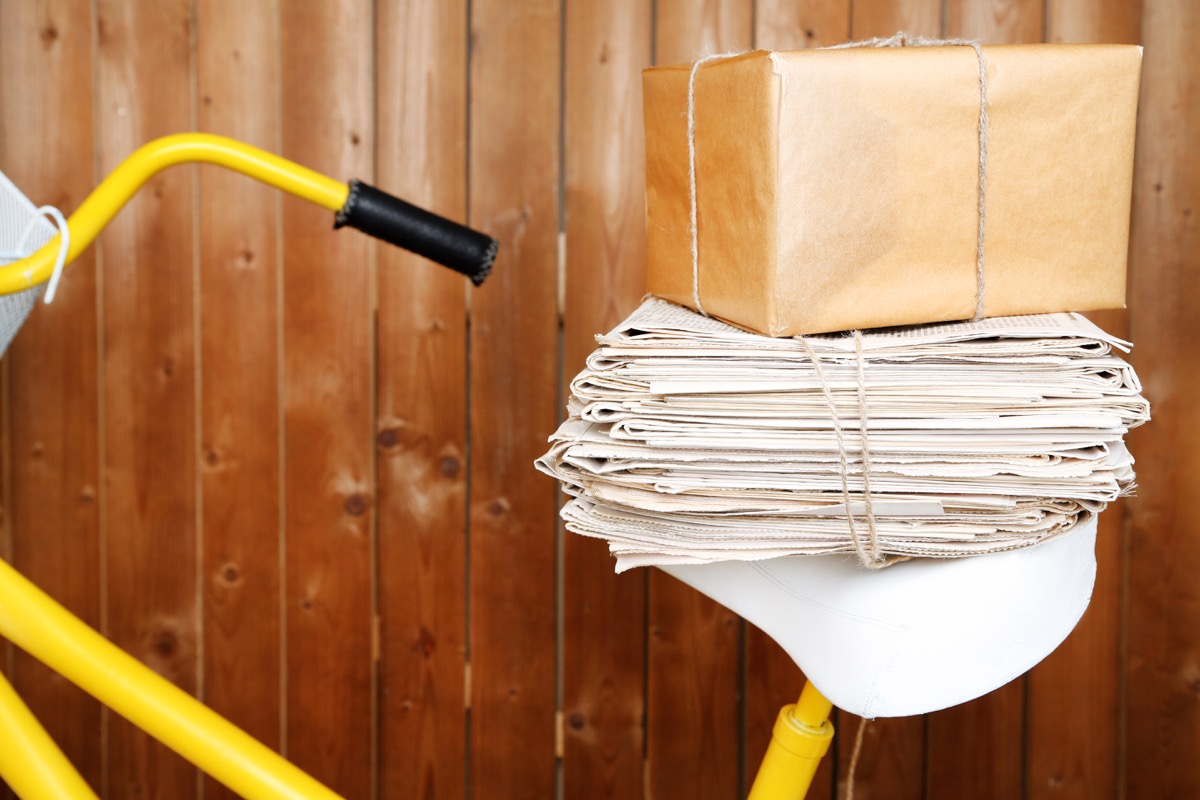
Though Hollywood stereotypes make it seem like newspaper carriers are just a bunch of teenagers on bikes tossing papers willy-nilly, there’s actually a lot of responsibility that come with the gig. “If I did wrong, I lost customers,” says Paul Joseph, a former newspaper carrier in Framingham, Massachusetts. “If I was late, somebody would notice. I had to make sure those papers were there even if I was sick or had to be away. I had to make sure I had a reliable substitute, which meant I had to make hiring decisions, even as a kid.”
2
And it can also get quite dangerous.

It’s not uncommon for newspaper carriers to face danger while on the clock. For instance, one newspaper carrier in Little Rock, Arkansas, was shot and carjacked mid-shift in August 2018. And there was also the paper deliverer in Anchorage, Alaska, who was repeatedly stabbed during a morning shift a few months prior—and then went on to finish his route! Clearly, it’s a far more dangerous job than some might imagine.
3
It’s very satisfying to land a perfect newspaper throw.
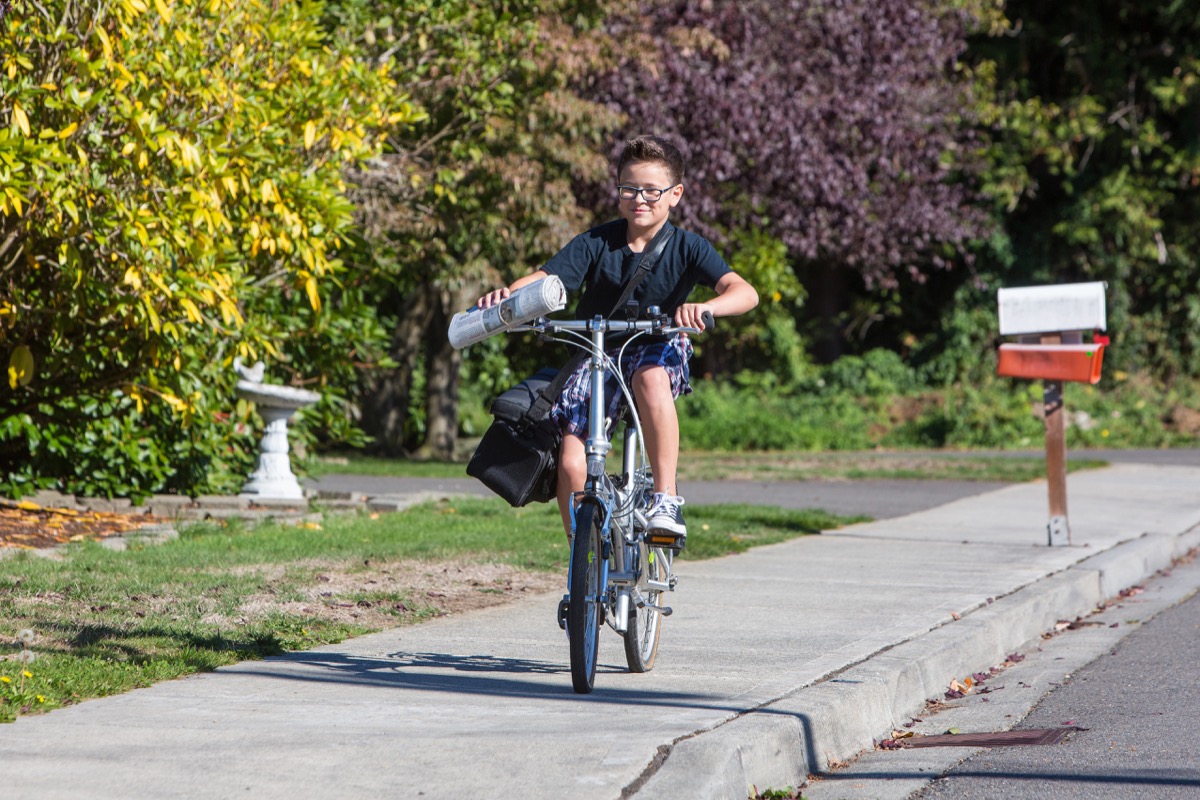
Few skills are more essential to a newspaper carrier than the paper toss. When newsies used to ride bikes to deliver the paper, they’d toss papers towards houses as they rode, so as not to slow down and waste a single minute on their route. Though getting it in the right zone is fairly common practice, landing a perfect throw—where the paper lands squarely on the center of a stoop—is akin to scoring a slam dunk. These days, the paper toss is still a skill news carriers try to master, except it typically happens from the seat of a car, rather than a bike.
Paty Quyn, a former delivery girl herself, recalled to a Hudson Valley radio station about one local newspaper delivery person’s skills. “With exact precision, [they were] able to throw from their car window while meandering down the road,” she said. “For the short time I was along for the ride, I saw skills that must have taken years to perfect. While traveling safely, on the correct side of the road, this paper person landed one paper dead center in a walkway leading to the front porch on the driver side. Then, without missing a beat, rolled on and landed a driveway dead center on the opposite side through the passenger side window.”
4
But missing the mark can cost you hundreds!
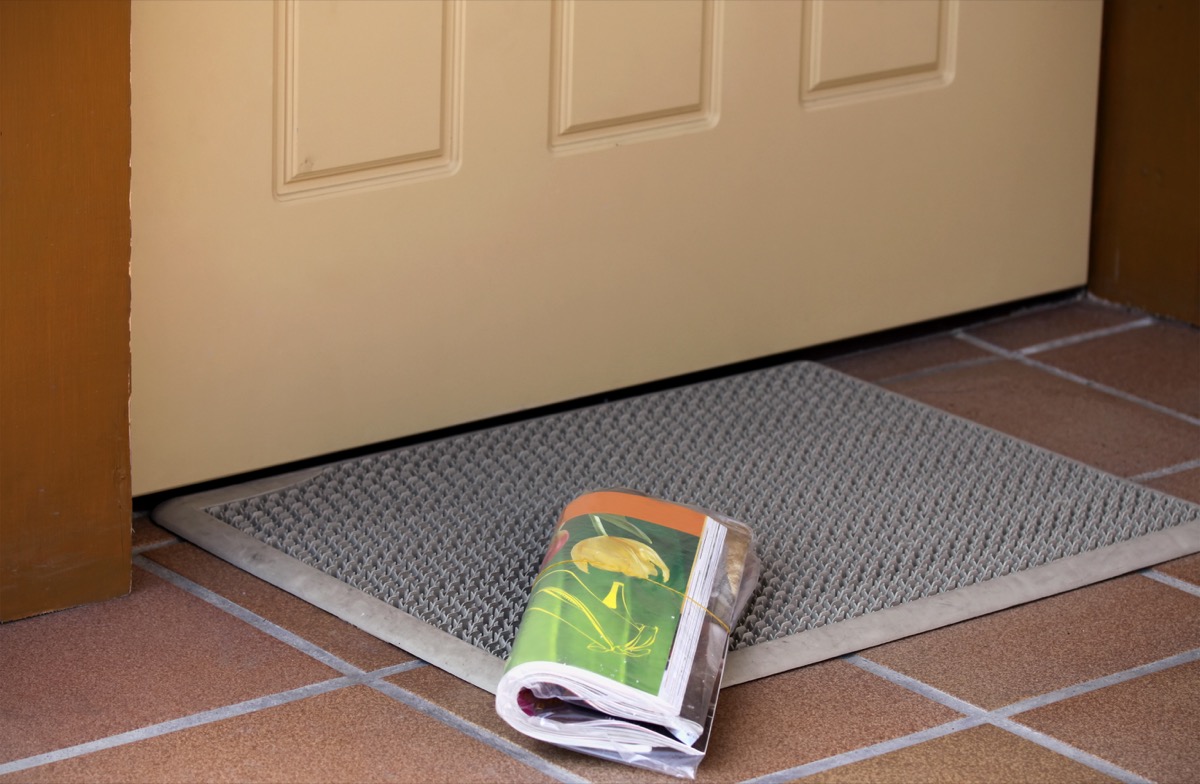
While there is nothing like landing the perfect throw, the paper toss can backfire. There are a lot of homes with fragile exteriors, and a failed attempt can leave a newspaper carrier in a lot of trouble… and debt. “[I know] the terror of landing a ‘perfect throw’ on a doorstop where there’s a thin glass window framing the door,” says James Cobb, a former newspaper carrier in Tucson, Arizona. “My ‘perfect throw’ broke said window—and cost me $100!”
5
And putting a newspaper in a mailbox can cost you thousands!

“You can put [newspapers] in a newspaper box if the customer has one, but not a mailbox,” says Pat Weeks, a former newspaper carrier from Aiken, South Carolina. “And if it’s a paper box, it has to specifically be labeled as such and cannot be used for mail at all. If you are found putting newspapers in a mailbox, you get fined.” According to the U.S. Postal Service, that fine, for anyone who places something inside a mailbox in which “no postage as been paid,” is a maximum of $5,000 for individuals and $10,000 for organizations. Oof!
6
Ideally, papers should be “porched.”

In newspaper carrier speak, “porching” means that a paper should be placed in a way that keeps it free from the elements, which can mean going above and beyond a normal toss. “Papers had to be ‘porched.’ Even on the rainiest days, the paper had to remain dry, so carriers usually tucked the edition in-between the screen door and front door or sometimes used the Meadow Gold milk box sitting on the porch,” according to Tulsa World’s Nancy Hollingshead, who interviewed former newsies of the 1930s through the 1970s.
7
Or really, they should be placed wherever and however a customer requests.

Some customers only care about one thing: They get their paper, doesn’t matter how. Others, on the other hand, want things done in a particular way, each and every day. For those folks, Weeks says she kept notes about each customer and the special ways they wanted things done in a notebook.
“Customers like their paper thrown in the same spot, at the same time, every day,” Weeks says. “And certain ones like it bagged, and others, doubled bagged. You’ll find that some want in the middle of the driveway, and some, right on top of the driveway. And there’s the ones that don’t like you to drive up too close to their grass or the ones who don’t want you to play music in the morning.”
8
Payday used to be the best day to collect subscription fees.
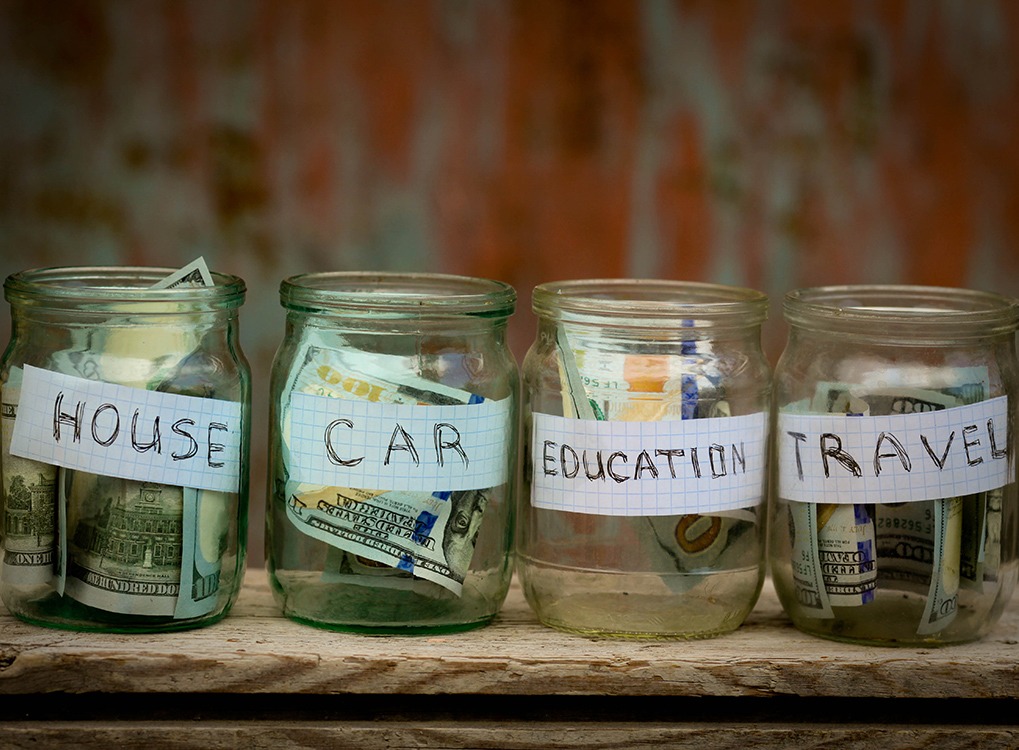
It used to be a newspaper carrier’s responsibility to collect their customers’ subscription money, so it was helpful to know when their customers got paid. Cobb says that “most of [his] customers got paid month-to-month and payday was the best time to collect their subscription fees.”
9
And you had to cover the costs if subscribers didn’t pay.
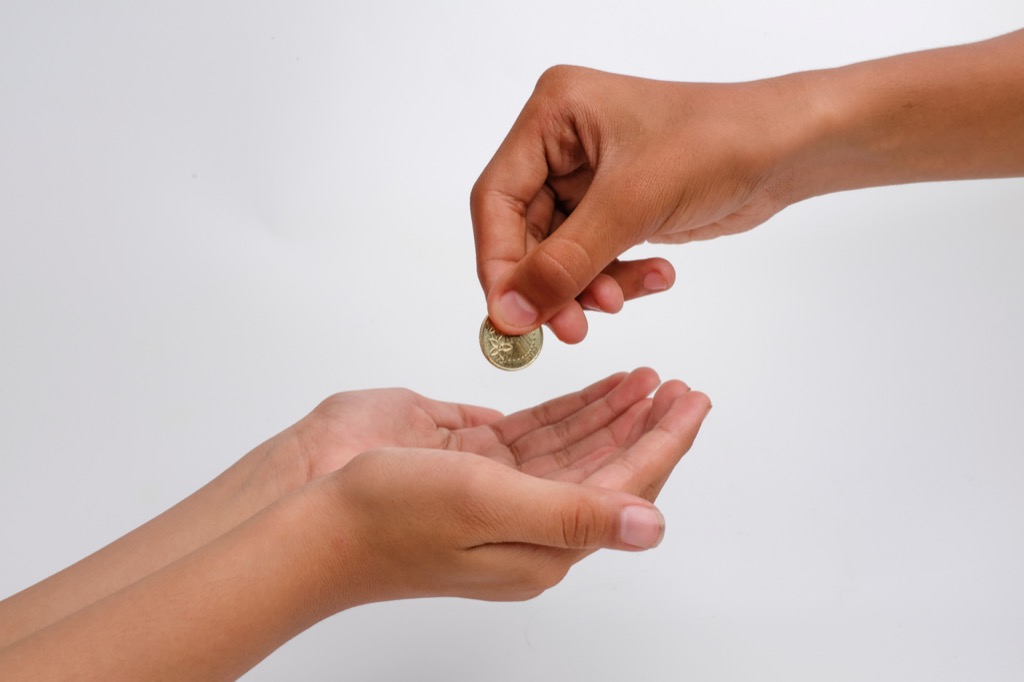
There’s a reason why newspaper carriers were so diligent about collecting payments: If their customers didn’t pay, they would have to cough up the money themselves, according to Hollingshead. “Whether it was a weekly or monthly effort, many had to knock on the same doors repeatedly to get their money,” she wrote. “If the subscriber didn’t pay, the carrier was still liable for the bill, and several camped outside front doors to collect their wages. One former paperboy can still point out which ‘houses’ owe him money.”
10
Bigger stories once came with bigger paychecks.

In the 1950s, if a major news event went down, newspaper carriers could get excited about a possible pay bump. “[A] big story meant lots of Courant sales,” Rob Newton, a former paperboy, told the Hartford Courant. “I remember when President Kennedy was shot, I emptied two Courant honor boxes and made over $15 that day. Everybody wanted the Courant that morning.”
11
The creed for postal workers (“neither snow nor rain nor heat nor gloom of night”) applies to newspaper carriers, too.

When your job requires being outside, you often face a lot of different delivery conditions, which was especially challenging when carriers rode bikes and walked their routes.
“I walked the same route when it was hot in the summer, cold in the winter, rainy, windy and everything else,” Joseph says. “I walked on top of snow that was capped with ice strong enough to hold my weight. I’ve been stung by bees, chased by dogs, and just about anything life had to throw at me, [and I still] generally speaking, delivered those papers to the general satisfaction of the customers.”
12
The job has to get done, no matter what.
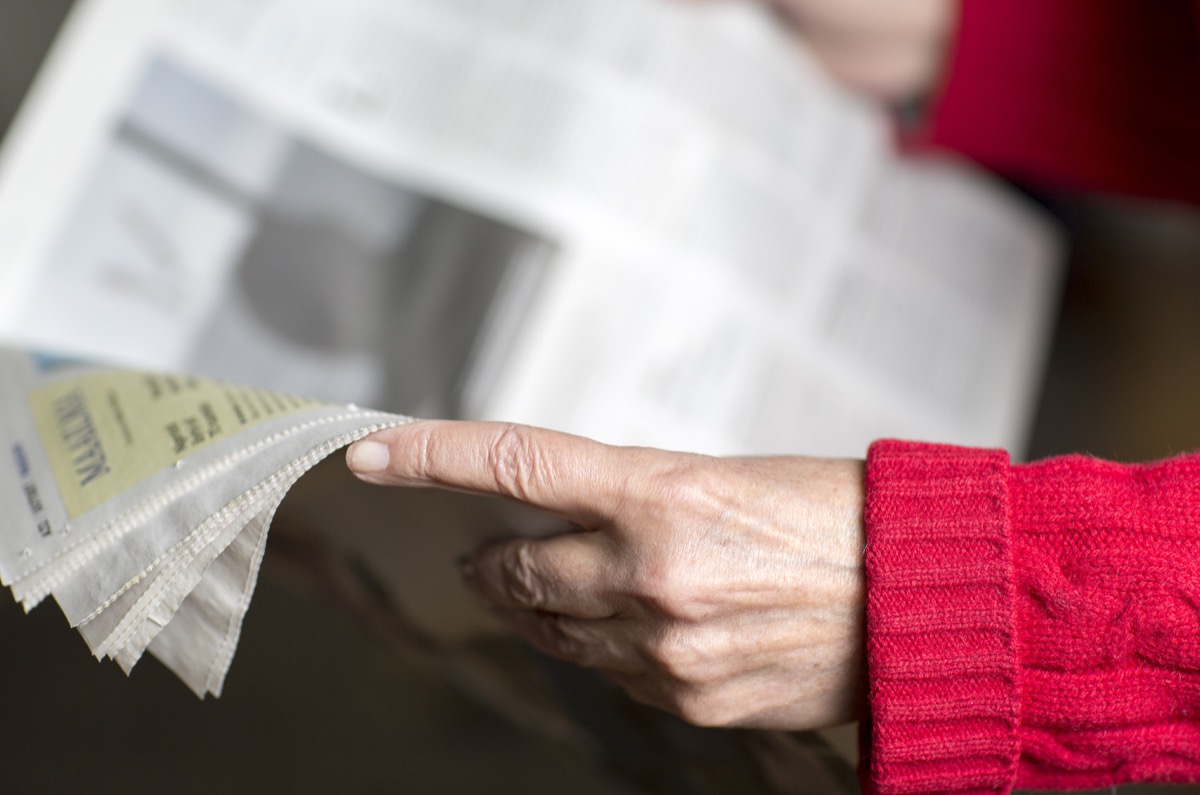
Despite recent technological advancements—and the instantaneity with which we can access news today—some people heavily rely on physical newspapers to get their news fix. And, as a newspaper carrier, you understand the responsibility you have to provide that for them. Take Frank Fogila, for instance. He’s delivered for the Times Union newspaper in Albany, New York, for a dozen years and hasn’t once missed a day.
“In the 12 years he’s been delivering papers, he’s never called in sick—not once. Sometimes, when the load is a little heaver (say, on holidays or Sundays), his wife will assist with delivery,” reporter Kristi Gustafson Barlette wrote in the Times Union.
13
You learn which “beware of dog” signs are bluffing.

When working the paper route, you typically come across many dogs, and you begin to learn which pups live at which houses. “I knew everyone who was bluffing with their ‘beware the dog’ signs and who was legit,'” says Michael O’Brien, a former paperboy turned leadership coach with Peloton Coaching and Consulting. “I was careful with the legit homes, since I was chased numerous times.”
14
And you learn to appreciate mornings.

Since the paper is typically delivered before most people wake up for work, newspaper carriers are usually some of the first people awake every day. And the quiet of the morning becomes something they revel in. “[I] learned to appreciate the quiet mornings, especially in the warmer months when the sun was just rising,” Jim Roche, a former Hartford Courant paperboy, told his prior employer. “You had the whole neighborhood to yourself and the beauty of God’s earth was all around you, making you know how great it was to be alive.”
15
You get to see some very interesting things on your route.
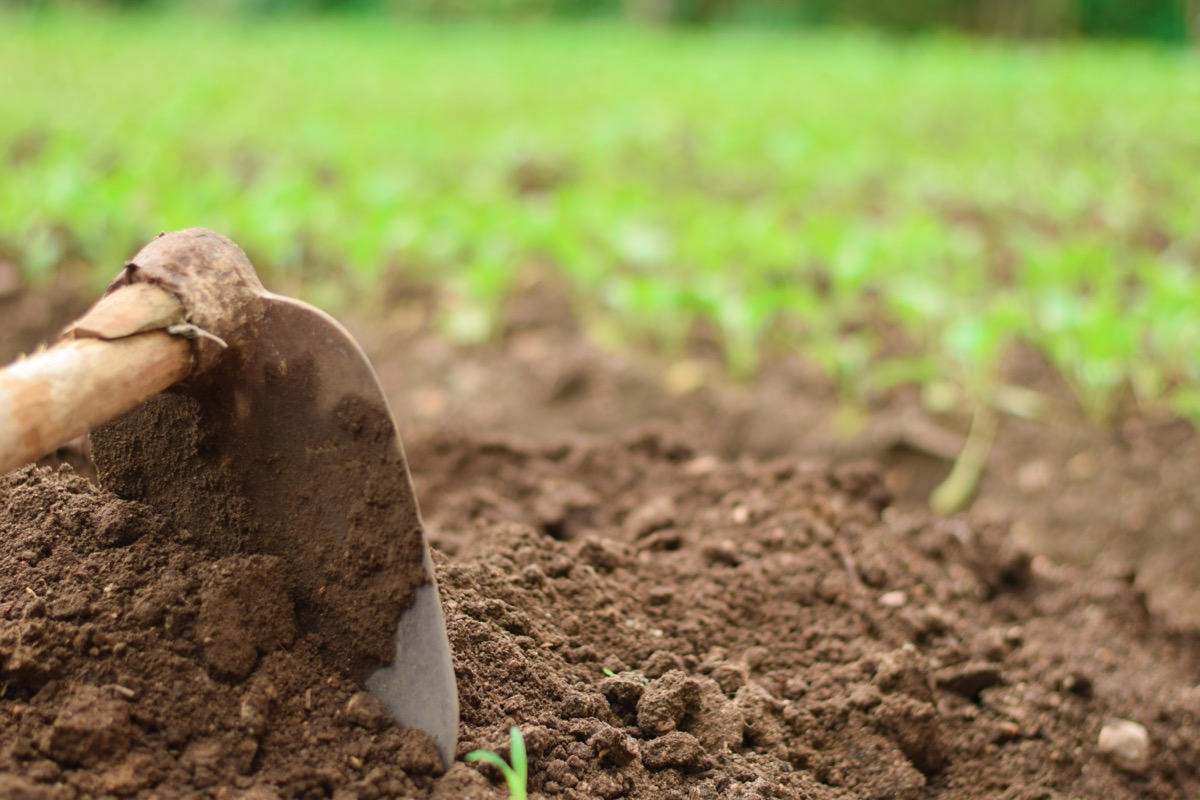
When you deliver to the same route day in day out, you really begin to learn about the people you see every day—and that includes all the habits and interests neighbors and friends may not be privy to. Cobb says he knew which customer liked classic cars, which one liked rare flowers, and which one liked four-wheeling in the backcountry. But “one of the most interesting people on my route wasn’t a customer,” he notes. “He was an alcoholic, homeless, schizophrenic artist who’d take junk he found and make little structures for toy rabbits and mice in alleys and vacant lots. If I could go back in time, I’d give myself a camera, talk to him, and try to help him out.”
16
And you don’t have a boss to report issues to.

Any service worker knows how hard it is to work a job that requires public interaction. However, as a newspaper carrier, you have to learn to accept exactly what you’re dealing with since you don’t have a higher up to go to. “Some [customers] would argue with me about whether or not I collected twice in one week or if they owed me for the previous week,” Joseph says. “Some were friendly, some were not. But there was no boss to complain to for me.”
17
But your loyal customers make it all worthwhile.

Weeks had served roughly three decades in the newspaper delivery business when she found out her company was being bought out. And while she had the option to possibly be rehired, she would have had to change her route, which wasn’t something she was keen on doing. It was during this time that she found out how loyal the customers she had served for so many years actually were.
“If you give your customers good service, are dependable, polite, and build a rapport, then they like you and they’re loyal to you,” Weeks says. “I had customers calling the president of the company, raising Cain when they got rid of me. They said that I was the best paper carrier they had, and they needed to get me back. Those same customers also sent me cards, begging me to come back. Customers may be particular and sometimes fussy, but if you give them good service, they’ll have your back.” And for more on the world of newspaper delivery, Here’s the Origin Story Behind Newspaper Carriers Yelling “Extra! Extra!”
To discover more amazing secrets about living your best life, click here to follow us on Instagram!